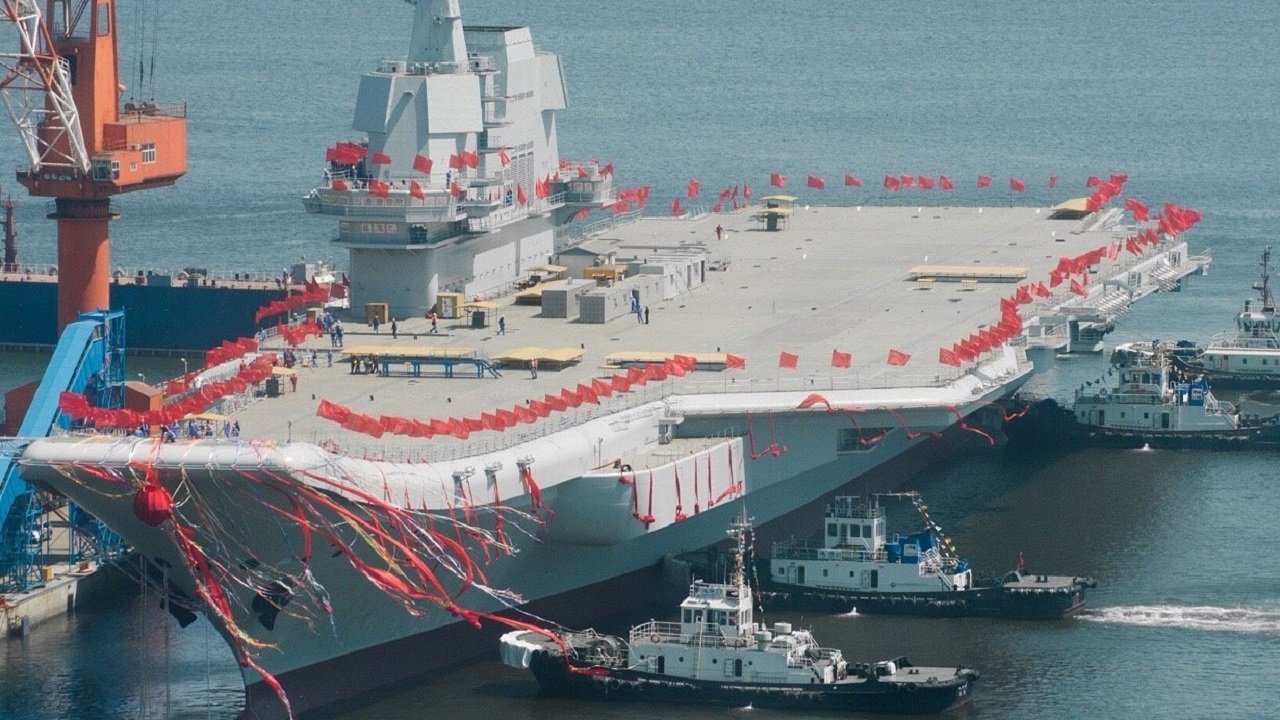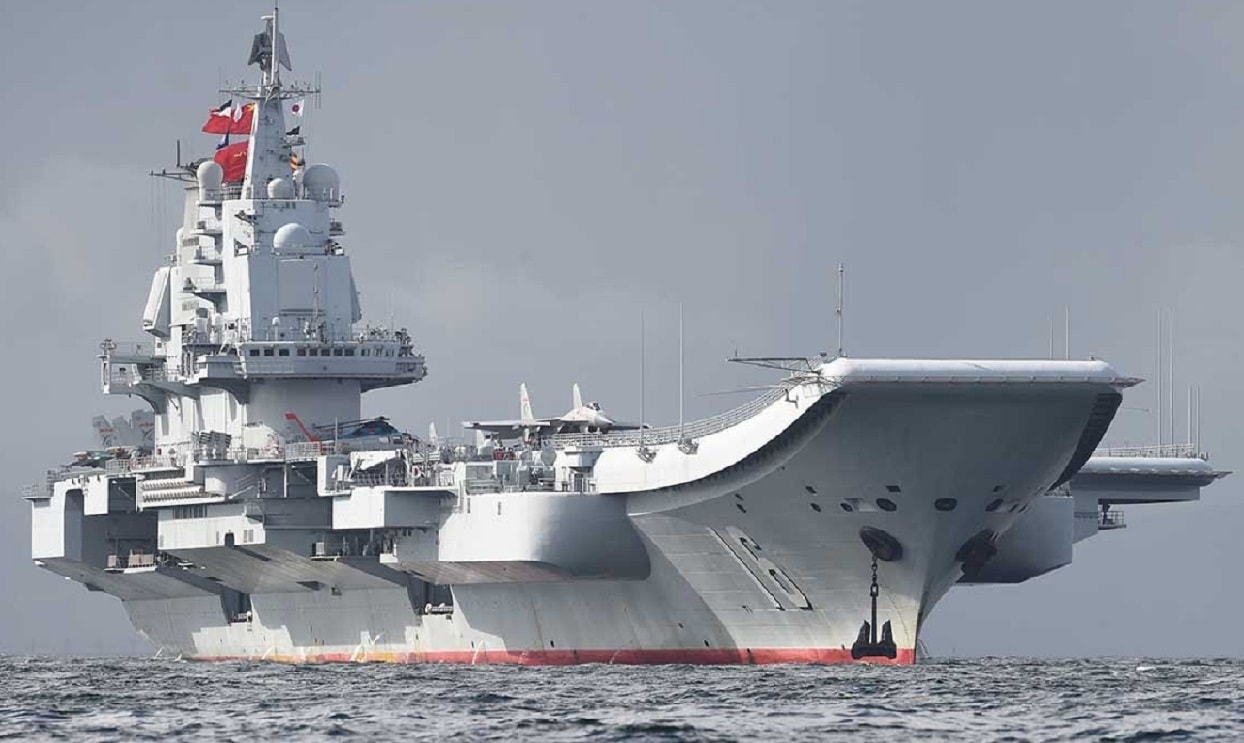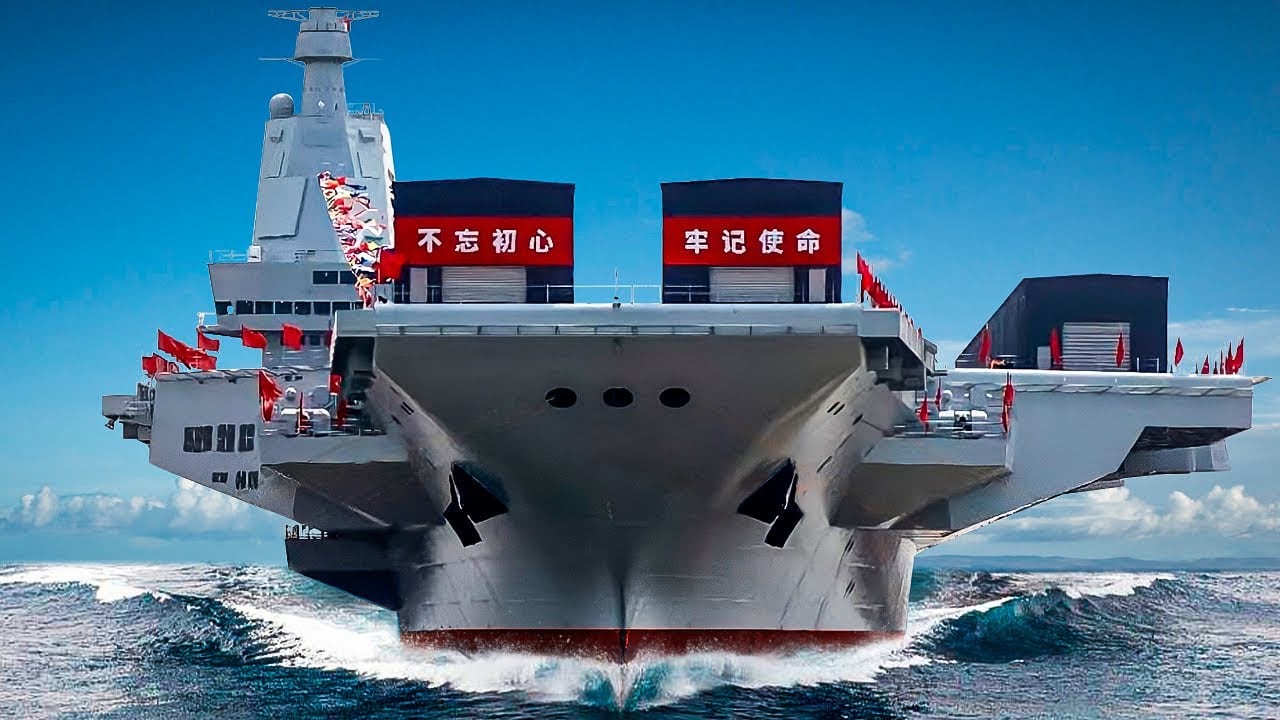Key Points and Summary: China’s naval ambitions are accelerating, with three aircraft carriers already operational and plans for at least six. The People’s Liberation Army Navy (PLAN) is not only expanding its fleet but also conducting large-scale training exercises mimicking U.S. naval operations.
-With military bases in Djibouti and growing influence through the Belt and Road Initiative, Beijing is laying the groundwork for global power projection.

Fujian, China’s new aircraft carrier. Image Credit: Chinese Internet.
-The key question remains: Can China build carriers fast enough to challenge U.S. dominance at sea? While the PLAN still lags behind the U.S. Navy, its rapid shipbuilding pace is an undeniable threat to global stability.
China’s Aircraft Carriers at Sea: A New Global Superpower?
Little mystery surrounds China’s well-known and documented ambition to build a large, global fleet of at least six aircraft carriers, which is already well underway.
The People’s Liberation Army – Navy (PLAN) has operated three aircraft carriers simultaneously on the ocean as its third and newest Fujian-class carrier conducted sea trials. In contrast, the Chinese Liaoning and Shandong conducted patrols in the Pacific.
Three carriers on the sea simultaneously indicate early phases of what appears to be a large-scale Chinese ambition to project multi-theater, global naval and air power. The concept is as clear and self-evident as it may be concerning to the Pentagon. The PRC (People’s Republic of China) is moving quickly to expand its influence and reach beyond being a regional Pacific power.
Instead, it is working to rival the US Navy as a pre-eminent global force capable of simultaneously projecting power across and within multiple theaters worldwide.
The US, for example, can operate one or two carriers in the Pacific while also maintaining a carrier presence in the Mediterranean and other global hotspots. A PLA’s ability to operate similarly brings military and geopolitical implications, enabling China to strengthen and expand its growing global influence.
PLA Global Ops and Aircraft Carriers
The PRC is already known to be conducting large-scale economic and political influence operations in key places such as the African and South American continents, therefore adding a carrier presence would introduce unprecedented military dimensions to these well-known ongoing efforts.
For example, in recent years, China has built a forward-operating military base near the US military’s facility in Djibouti, located in the Horn of Africa. In a related effort, Beijing’s one-belt-one-road initiative (BNI) seeks to establish access and lines of influence from Western and Southern China into India and the Middle East.

China Aircraft Carrier. Image: Creative Commons.
The 2024 Pentagon’s annual China report explained that the PLAN is conducting far-sea carrier training operations at further distances off its coast in key areas near the Philippines. Sure enough, not long after the US Navy conducted aligned dual-carrier sortie coordination drills in the Pacific, the PLA Navy did the same thing.
This parallel suggests that the PRC is not only looking to copy US reach and influence but also mirroring US tactics and training. Chinese government-backed newspapers such as the Global Times regularly showcase PLA multi-domain task force kinds of training and efforts to copycat the Pentagon’s Joint All Domain Command and Control (JADC2) command and control system.
Should China wish to support its growing military presence in certain places, such as the Middle East, or expand its allied relationships, it will need forward-deployed navy power projection.
Can China Build Aircraft Carriers Fast Enough?
There are two clear yet contradictory elements to this; in one sense, China is far from being able to maintain a global presence in any way comparable to the US.
China’s well-known carrier construction efforts only seem to be expanding, and they are fortified by the PRC’s often-discussed civil-military fusion, enabling streamlined and synergized government and industry efforts to prioritize and fast-track shipbuilding.
As part of this, China is adding new shipyards and building carriers and warships at a staggering pace. It is unclear how many years the PLAN may take to operate a carrier fleet the size of the US Navy, as there may be many estimates. The threat, however, is likely not lost on the Pentagon.
About the Author: Kris Osborn
Kris Osborn is the Military Technology Editor of 19FortyFive and President of Warrior Maven – Center for Military Modernization. Osborn previously served at the Pentagon as a highly qualified expert in the Office of the Assistant Secretary of the Army—Acquisition, Logistics & Technology. Osborn has also worked as an anchor and on-air military specialist at national TV networks. He has appeared as a guest military expert on Fox News, MSNBC, The Military Channel, and The History Channel. He also has a Masters Degree in Comparative Literature from Columbia University.

